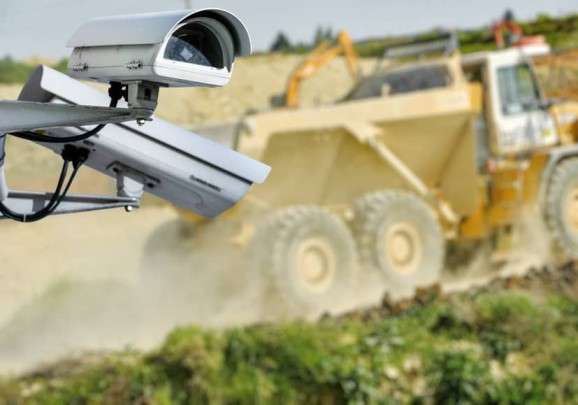According to the Bureau of Labor Statics, almost 2.7 million people suffered from non-fatal injuries in 2020. And injuries acquired while at work have a fair share of these statistics. Some professions and workplaces are very hazardous for their employees. These jobs include jobs with heavy machinery, traveling, use of excessive chemicals, and much more.
Despite all the safety precautions, labor sometimes faces dangerous accidents. These accidents can even make the victim unable to work for several days. However, if this happens, it is your legal right to get compensation for workplace injuries.
But if the reason behind your injury is your employer’s negligence, you have the right to file a personal injury lawsuit against him. In this way, you can seek additional compensation. Unfortunately, during the ongoing lawsuit, you may face some financial problems.
But don?t worry! Settlement funding for workplace accident claims can help you out in this situation. Pre-settlement fundings are the legal funds that can help you in your financial downfall. These loans can provide you with the expected amount of money you will get after your case settlement.
Eligible Workplace Injuries for Legal Funding
Regardless of your job type, you can face a severe workplace injury. However, not all injuries are qualified and eligible for legal funding. Let?s get into the article to know which workplace injuries are eligible for legal funding.
Slip and Fall Injury
The first and the most common type of workplace injury is slip and fall. If someone fails to place a caution sign on a wet floor or leaves some slippery material on a floor, an employee can fall. Because of someone else negligence, the employee has to face severe injury. These injuries include broken bones, injury to the head, or even a concussion.
Equipment Malfunctioning
Another common type of workplace injury is caused by malfunctioning equipment. Many jobs involve the use of heavy machinery in the workplace. However, it is the responsibility of the manufacturer and the maintenance team to make sure that the machine works as intended.
However, if someone gets injured due to malfunctioning machinery, the manufacturer or the maintenance team will be liable. The employer can claim a lawsuit against them.
Insufficient Training
Some jobs require proper training before entering into the work field. This is the responsibility of the employer to train every field worker. However, if he fails to do so, the employees can sue him for their injuries.
Always remember, if you suffer from loss due to inadequate training, you can claim a personal injury lawsuit against the employer.
Working with Dangerous Chemicals
Some jobs involve working with dangerous chemicals, excessive radiation, and much more. The negligence in these jobs can cause severe and long-term illnesses like cancer. However, it is the responsibility of an employer to arrange every safety precaution.
If the employer neglects the safety precautions and the employee gets injured, then the employer is liable for the injury.
High Volumes and Excessive Noise
Working in a field with high volumes and excessive noise like construction sites or factories can affect your long-term and short-term hearing power. However, it is the responsibility of an employer to provide every safety measure to their employees.
If the employer fails to provide the employees with all the safety measures, they can claim a lawsuit against him. After all, the employee?s quality of life is also an important aspect to consider.
How to Protect Yourself From Workplace Injuries
However, keeping yourself safe from any injury is your responsibility. Let?s understand how you can prevent yourself from workplace injuries. Here are some tips and tricks for you!
1. Identifying the Potential Hazards
The first thing you can do is identify your workplace’s potential hazards. Like if you are working in a construction field, the potential risks are slip and fall injuries, malfunctioning equipment, and much more. So the first thing you should do is to identify the key hazards.
2. Prioritize Each Issue
The following tip is to prioritize each issue. In this way, you can start with the most important ones. Examine each problem or hazard in terms of:
- The possible implications if this problem or hazard causes harm
- The probability that the problem or hazard will cause harm
3. Always Use Personal Protective Equipment
Personal protective equipment plays a very important role in your safety. It safeguards you from any potential hazard. This includes wearing masks, aprons, gloves, appropriate shoes (with toe covers and heel support), and other items according to your job type.
4. Taking Care of Your Body
Always take care of your body while at work. This means you must exercise caution when lifting or moving an object and/or performing repetitive movements.
Here are some helpful suggestions:
- Always seek assistance when moving or lifting a heavy or difficult object.
- Never, ever twist your spine. Try to stay on track.
- Instead of pulling, push.
- Maintain heavier items at a good body height level. That is, not on a high or low shelf.
- Lift and push up with your stomach (core) and legs rather than your back.
- Move closer to an object to make it easier to move it.
- Wear body braces, such as lifting belts, if available.
Dangers of Working In a Dangerous Workplace
Some workplace contains the potential risk of injuries to the employees. However, it is the responsibility of employers to provide their employees with adequate training and all the safety measures before entering the field.
Some of the dangers of working in a hazardous workplace include:
- Working on a great height with the potential to fall.
- The jobs may include heavy machinery. These jobs have a potential risk of malfunctioning equipment.
- Jobs where working on slippery surfaces can?t be avoided. The employees have a potential risk of slip and fall injury in these kinds of jobs.
- Working in a field with high volumes and excessive noise. This job has a potential risk of losing short-term or long-term hearing power.
- The workplaces that can cause a fire hazard.
These hazards can be unavoidable in industries, and the employer must take safety precautions to reduce the risk. However, implementing basic safety procedures and regulations can prevent nearly all unsafe working conditions and workplace accidents.
In workplaces where employers develop all necessary safety procedures and best practices, the ratio of injuries and accidents eventually falls. However, when corners are cut in the maintenance of equipment and/or safety procedures, disasters can occur.
Take Away
It is your responsibility to prevent yourself from any workplace hazard. However, your employers are responsible for providing safety measures and equipment you need for your safety.
However, if someone else was at fault for your workplace injuries, you are entitled to compensation for your medical expenses, lost wages, and pain and suffering. Don’t accept anything less than the total value of your lawsuit or workers’ compensation claim.








